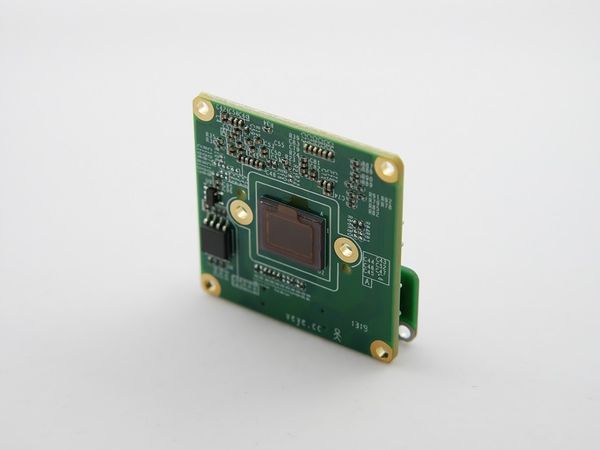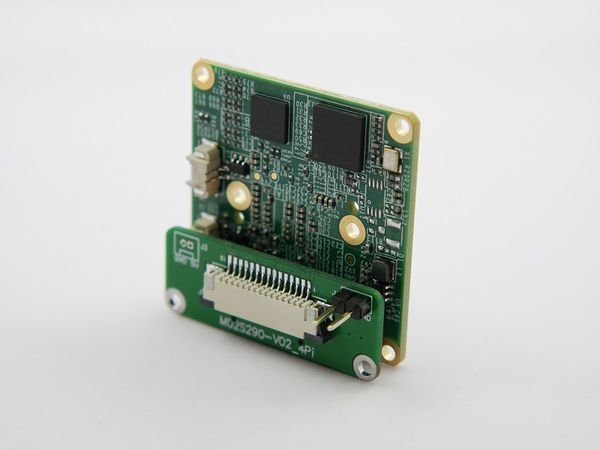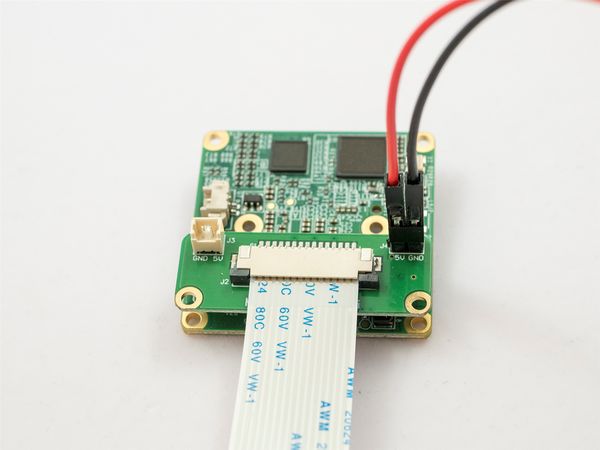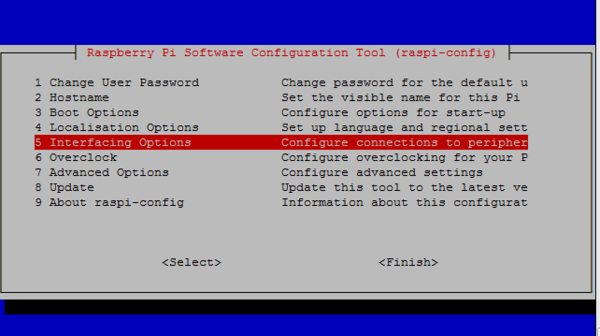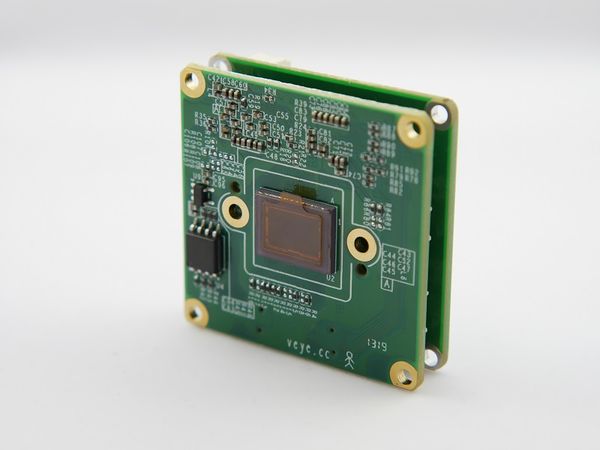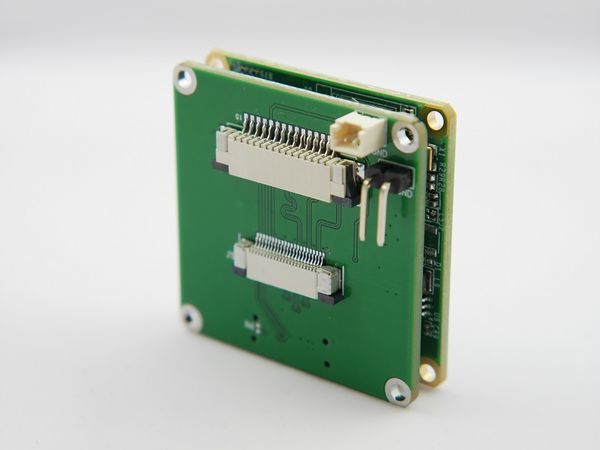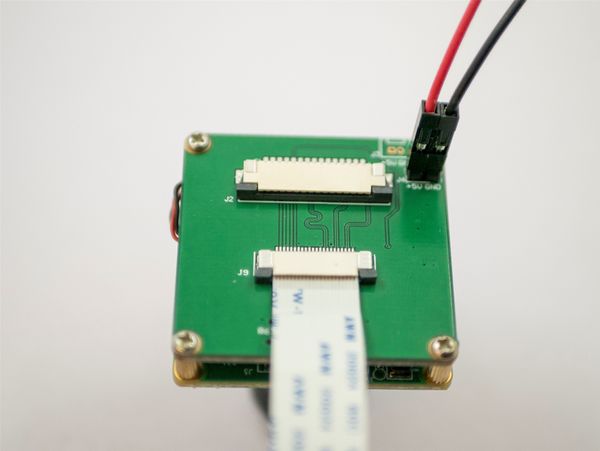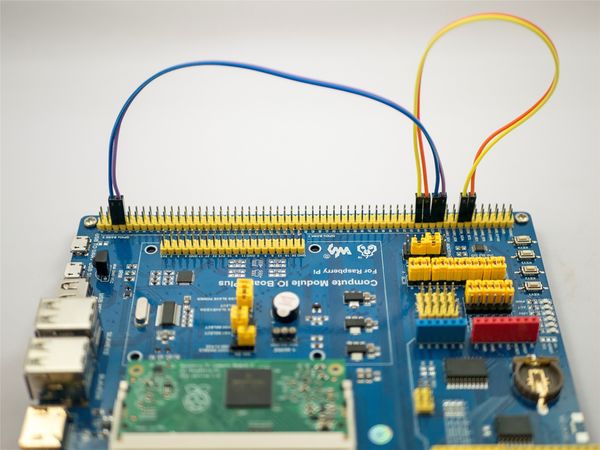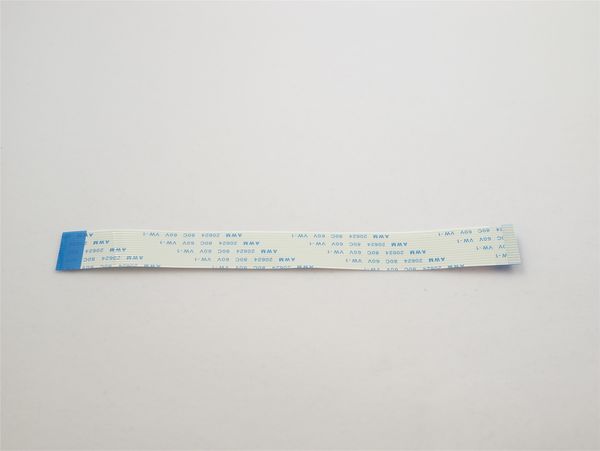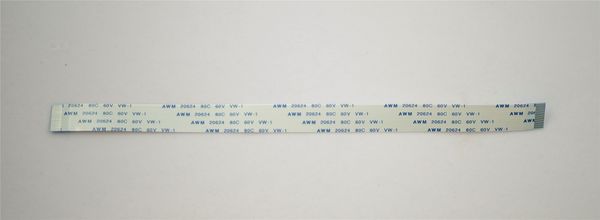Difference between revisions of "VEYE-MIPI-290/327 for Raspberry Pi"
| Line 49: | Line 49: | ||
====Toolkits Overview==== | ====Toolkits Overview==== | ||
[[File:Rpi github overview.jpg|alt=|center|thumb|600x600px|Software Tookits on github]] | [[File:Rpi github overview.jpg|alt=|center|thumb|600x600px|Software Tookits on github]] | ||
| − | Software toolkits contains | + | Software toolkits contains three parts. ''veye_raspcam'' is raspcam alike Video Stream Toolkits, D_mipi_rpi is D-SDK Video Stream Toolkits, ''i2c_cmd'' is Video Control Toolkits. |
*Video Stream Tookkits provides real-time display, capture, video recording, etc. | *Video Stream Tookkits provides real-time display, capture, video recording, etc. | ||
Revision as of 22:53, 5 December 2019
How to use VEYE-MIPI-290/327 camera module on Raspberry Pi
1 Introduction
VEYE-MIPI-290/327 is a is a special camera module which is compatible with RASPBERRY PI. It use SONY STARVIS sensor——IMX290/IMX327 and has excellent ISP functions build-in.The output format is stanard UYVY stream. It is very easy to use it with RASPBERRY PI.Of course, she also has some subtle differences with the official version. She only support 1080p resolution,and i2c cmd is different.
Theoretically,VEYE Camera Modules support all Raspberry Pi. For performance reasons, I recommend you use 3,3+,4 version. This article uses Raspberry Pi 3B as an example to explain how the VEYE-MIPI-290/327 camera module working with Raspberry Pi. It also explain the specials of RPI Computer Module and Zero using VEYE Camera Module.
2 Hardware Setup
Essentials You Need:
- Raspberry PI Items : RPI, Network, MicroSD Card, Power, Monitor
- Camera Module Items : VEYE-MIPI-290/327,FFC,Dupont Wire,Lens,Adaptor Board. (We developed 2 types of adaptor boards, Mini Adaptor Board and Adaptor Board. Mini board only support Standard RPI,Adaptor Board support both Standard RPI and CM & Zero.)
Setup guide
- Connect the VEYE Camera Module the CSI-2 port using FFC Cable(type B).
- Connect Dupont Wire as shown below. VEYE-MIPI-290/327 need an addtional power.
- Startup RaspberryPi.
3 RaspberryPi System Setup and Configuration
- Setup RasapberryPi System,reference this link.
- Go to the main menu and open the Raspberry Pi Configuration tool. Enable Camera and I2C interface.
sudo raspi-config
- Enable SSH and Samba services.
4 Sofware Toolkits Install
4.1 Toolkits downloading
There are two way to install software toolkits.
- 1. Clone from github
git clone https://github.com/veyeimaging/raspberrypi.git
- 2. Downloading from github (link here), upload to RPI using samba or USB disk.
4.2 Toolkits Overview
Software toolkits contains three parts. veye_raspcam is raspcam alike Video Stream Toolkits, D_mipi_rpi is D-SDK Video Stream Toolkits, i2c_cmd is Video Control Toolkits.
- Video Stream Tookkits provides real-time display, capture, video recording, etc.
- Video Control Toolkits is a shell script which provides ISP parameters configuration capbility.
- Both is Open Source.
5 Video Stream Toolkits Manual
5.1 veye_raspcam: raspcam alike toolkits
cd raspberrypi/veye_raspcam/bin/
chmod +x *
VS toolkits provides several ELF file.
- veye_raspipreview
./veye_raspipreview -t 20000 -p '0,0,1280,720'
Dispaly real-time video to HDMI output,preview window is 1280*720, last 20 seconds.
./veye_raspipreview -t -1
If t is -1, Show continuous Real-time display to HDMI output,full screen.
- veye_raspivid
./veye_raspivid -t 5000 -o ~/test.h264
Implement H.264 format encoding and record for 5 seconds,Record the stream data to file ~/test.h264.
At the same time,Dispaly real-time video to HDMI output.(use -n if you do not want preview)
- veye_raspivid (direct tcp stream with netcat,gstreamer etc..)
RPI side
./veye_raspivid -b 4000000 -t 0 -o - | nc -l -p 5000
H.264 encoding on bitrate 4Mbps,forever,listen on TCP port 5000.
PC side,using gstreamer(Powershell recommended)
./gst-launch-1.0 -v tcpclientsrc host=x.x.x.x port=5000 ! decodebin ! autovideosink
x.x.x.x is RPI IP address
gstreamer windows version download.
PC side, using mplayer
./mplayer -x 1280 -y 720 -geometry 0:0 -fps 200 -demuxer h264es -noborder ffmpeg://tcp://x.x.x.x:5000
x.x.x.x is RPI IP address
mplayer for windows download
- veye_raspividyuv
./veye_raspividyuv -t 200 -o /dev/shm/test.yuv
Record UYVY data to file /dev/shm/ directory(which is in DDR), time is 200ms.
- veye_raspiraw
./veye_raspiraw -md 2 -t 200 -o /dev/shm/out.%04d.yuv
Record one UYVY data to file /dev/shm/ directory(which is in DDR).
- veye_raspstillyuv
./veye_raspistillyuv -o /dev/shm/test.yuv
Capturing one image and save to /dev/shm directory(which is in DDR).1920*1080 YUV420 I420 format.
./veye_raspistillyuv -tl 50 -t 1000 -o /dev/shm/test%d.yuv
Capturing one image every 50 milliseconds and save to /dev/shm directory(which is in DDR).1920*1080 YUV420 I420 format.
- veye_raspistill
./veye_raspistill -o ~/test.jpg
Capturing one image and save to home directory.1920*1080 JPG format.
./veye_raspistill -e bmp -tl 50 -t 1000 -o /dev/shm/test%d.bmp
Capturing one image every 50 milliseconds and save to /dev/shm directory(which is in DDR).1920*1080 BMP format.
./veye_raspistill -k -o ~/test%d.jpg -t 0
Display video to HDMI,capture jpg image using keyboard,Enter to capture,X Enter to quit.
veye_raspistill support preview,-n will not preview。
5.2 D-SDK Toolkits Manual
It contains three parts: C language SDK(libdmipicam.so),C language sample,Python language sample.
5.2.1 Install support package
sudo apt-get update && sudo apt-get install libopencv-dev
sudo apt-get install python-opencv
sudo apt-get install libzbar-dev
5.2.2 D-SDK
- interface:
opensource,D_mipicam.h
- compile:
./build
- install:
sudo install -m 644 ./libdmipicam.so /usr/lib/
5.2.3 C sample
- preview
Dispaly real-time video to HDMI output
- preview-dualcam
Dispaly real-time video to HDMI output for dual cameras(RPI CM)
- video
H.264 format encoding and record to file.
- capture
Capture one jpeg image.
- video2stdout
H.264 format encoding and send to stdout,which could be used by pipe. It's like veye_raspivid -o -.
./video2stdout | nc -l -p 5000
- capture_yuv
Capture one yuv image.
- capture-dualcam
Capture jpeg images for dual cameras.
- yuv_stream
Shows how to get yuv stream.
- capture2opencv
Shows how to get yuv stream,transfer to opencv format and display it.
- qrcode_detection
Shows how to get yuv stream,transfer to opencv format and display it and detect QR code.
5.2.4 Python sample
- preview.py
Dispaly real-time video to HDMI output
- capture.py
Capture one jpeg image.
- capture_yuv.py
capture_yuv
- video.py
H.264 format encoding and record to file.
- capture2opencv.py
Shows how to get yuv stream,transfer to opencv format and display it.
6 Video Control Toolkits Manual
On Raspberry Pi, I2C-0 is used by GPU. We use I2C-1 as control bus for VEYE Camera Module. We provide a Shell Script — camera_i2c_config— to config pin usage.
Video Control Toolkits Manual : VEYE-MIPI-290/327 i2c
7 RPI Computer Module and RPI Zero Additional Info
7.1 Overview
RPI CM and Zero have a different MIPI CSI-2 port with standard RPI. And CM has can support dual cameras. Here I use a VEYE-MIPI-290/327 and a RPI CM3 as an example.
PS: I use a Computer Module IO Board Plus designed by WAVESHARE ELECTRONICS. The official CMIO Board is similar.
7.2 Hardware Setup
7.2.1 Connecting Video Stream Port
- Connect the VEYE Camera Module the CSI-2 port using FFC Cable(type A).
- Connect Dupont Line as shown below. VEYE-MIPI-290/327 need an addtional power.
- CM3 can support dual cameras.
7.2.2 Connecting I2C to CMIO
- CAM1:
Attach CD1_SDA to GPIO2 .
Attach CD1_SCL to GPIO3 .
- CAM0:
Attach CD0_SDA to GPIO44 .
Attach CD0_SCL to GPIO45 .
For RPI official CMIO board, please refer to Link.
For WAVESHARE CMIO board, as shown below.
7.3 System Setup and Configuration
For RPI official CMIO board, please refer to Link.
For WAVESHARE CMIO board, please refer to Link,Page 7.
7.4 Video Stream Toolkits
All command support [-cs] option.
option -cs 0 to control CAM0, -cs 1 to control CAM1. For example:
- veye_raspipreview
./veye_raspipreview -cs 0 -t 20000
Dispaly real-time video to HDMI output,from CAM0, lasts 20 seconds.
- veye_raspivid
./veye_raspivid -cs 1 -t 5000 -o ~/test.h264
Implement H.264 format encoding and record for 5 seconds from camera 1,Record the stream data to file ~/test.h264.
7.5 Video Control Toolkits
Downloading dt-blob.bin file from link,and upload it to /root/,reboot RPI.
./camera_i2c_config [cameranum]
| cameranum | description |
|---|---|
| 0 | CAM0 |
| 1 | CAM1 |
./veye_mipi_i2c.sh -b [i2c bus num]
| i2c bus num | description |
|---|---|
| 0 | CAM0 |
| 1 | CAM1 |
Other options see : VEYE-MIPI-290/327 i2c
8 FFC Cable Remarks
- For Standard RPI,use FFC cable TypeB.
- For RPI CM3 ,use FFC cable TypeA.
